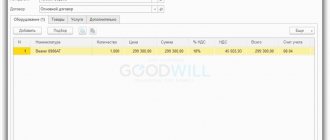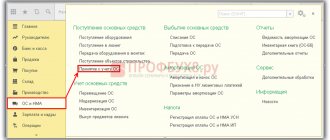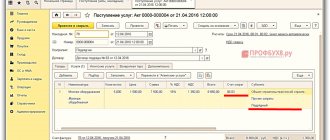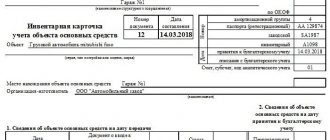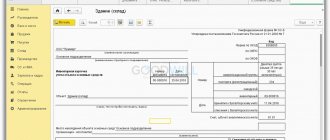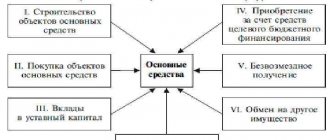Rarely does the economic activity of an organization stand still. Accounting items do not remain completely unchanged, with the exception of goods, which in most cases are resold in the same form. Fixed assets also change: buildings are rebuilt and repaired, computers are updated, equipment is improved.
There are several types of OS conversions, in particular:
- Various types of repairs.
- Retrofitting (completion).
- Reconstruction.
- Modernization.
In this article we will look at two types that often cause confusion: modernization and reconstruction. Russian legislation traditionally does not contain uniform and specific concepts. Different documents give different definitions. For tax accounting purposes, those given in Article 257 of the Tax Code are used. For BU, you can use the data from PBU 6/01 and Methodological Instructions (links in the article test).
Work that changes the technological and service purpose of the OS, leading to the emergence of new qualities of the object, is classified as modernization .
Reconstruction is a change, reorganization of existing facilities associated with the improvement of production, increasing its performance, it is carried out on the basis of a project drawn up in order to increase capacity, improve the quality of products, etc.
In fact, in practice it is difficult to distinguish between these two types of changes and simple repairs. It is often more profitable for an organization to accept expenses as current (i.e., repairs), so it is important how the documentation is drawn up and what exactly is indicated in it. For example, the type of work can be determined even by the estimate, in which prices are indicated according to special collections. The key ones are design and technical documentation, instructions for equipment, etc. The most accurate is a project that will indicate a specific type of work. And yet, from an accounting point of view, the boundaries remain fluid.
To make it easier to understand, during modernization the object changes in a qualitative sense, its characteristics are improved and improved. For example, installing a new hard drive in a system unit owned by an accountant instead of the old one is a repair. If an additional hard drive is installed (memory is significantly increased) or a more powerful video card to make it possible to work in a special graphics program on the computer, then the PC is being upgraded.
By the way! Modernization is a type of reconstruction. To accurately determine the type of work, it is recommended to use - Regulations MDS 13-14.2000, construction standards VSN No. 58-88 (R), Letter of the Ministry of Finance of the USSR No. 80 dated 05.29.84, definitions given in paragraphs. 14 – 14.3 of Article 1 of the Town Planning Code and other similar documents.
Reconstruction is easier to explain using a building as an example. It is generally accepted that it affects load-bearing structures. Let's say there is a warehouse that you decide to convert into offices. Conduct full communications into it - water supply, sewerage, expand the electrical network, install ventilation, change the roof, install stairs and, perhaps, even install a new ceiling inside and build an additional floor for administrative offices, which means you are performing a reconstruction. If you just tidy up the floor, cover the walls with plasterboard, hang wallpaper, install electrical converters, you will get a renovation. Because, despite the change in the purpose of the premises, there was no major reconstruction.
Documenting
The decision to modernize fixed assets must be formalized by order of the head of the organization, which must indicate:
- reasons for modernization;
- timing of its implementation;
- persons responsible for modernization.
This is explained by the fact that all operations must be confirmed by primary documents (Article 9 of the Law of December 6, 2011 No. 402-FZ).
If an organization does not carry out the modernization of fixed assets using its own resources, it is necessary to conclude a contract agreement with the contractors (Article 702 of the Civil Code of the Russian Federation).
When transferring a fixed asset item to the contractor, issue an act of acceptance and transfer of the fixed asset item for modernization. It can be compiled in any form. If the fixed asset is lost (damaged) by the contractor, the signed act will allow the organization to demand compensation for losses caused (Articles 714 and 15 of the Civil Code of the Russian Federation). In the absence of such an act, it will be difficult to prove the transfer of fixed assets to the contractor.
When transferring a fixed asset for modernization to a special division of the organization (for example, a repair service), you should draw up an invoice for internal movement in form No. OS-2. If the location of the fixed asset does not change during modernization, no transfer documents need to be drawn up.
Upon completion of modernization, an act of acceptance and delivery of modernized fixed assets is drawn up, for example, in form No. OS-3. It is filled out regardless of whether the modernization was carried out economically or by contract. Only in the first case, the organization draws up the form in one copy, and in the second - in two (for itself and for contractors). The act is signed by:
- members of the acceptance committee created in the organization;
- employees responsible for the modernization of fixed assets (or representatives of the contractor);
- employees responsible for the safety of fixed assets after modernization.
After this, the act is approved by the head of the organization and it is transferred to the accountant.
If the contractor carried out the modernization of a building, structure or premises, which relates to construction and installation work, then in addition to the act, for example, in form No. OS-3, an acceptance certificate in form No. KS-2 and a certificate of the cost of work performed and costs in form No. KS-3, approved by Decree of the State Statistics Committee of Russia dated November 11, 1999 No. 100.
What is it - definition
In order to correctly reflect modernization costs in accounting, it is necessary to conceptually separate this procedure from repair work and the reconstruction project.
It should be noted that the very concept of “modernization” is quite clearly regulated by the Tax Code of the Russian Federation (TC RF).
The regulatory act stipulates that modernization covers factors leading to modification of the service and technical functions of the corresponding fixed asset item.
Typical results of OS modernization are often the following achievements:
- strengthening the overall power of the equipment used;
- increasing its productivity (productivity);
- the appearance of new properties and characteristics in an object that are useful for economic activity.
Accounting
The costs of modernizing fixed assets change (increase) their initial cost in accounting (clause 14 of PBU 6/01).
The organization is obliged to keep records of fixed assets according to the degree of their use:
- in operation;
- in stock (reserve);
- on modernization, etc.
This is stated in paragraph 20 of the Methodological Instructions, approved by order of the Ministry of Finance of Russia dated October 13, 2003 No. 91n.
Accounting for fixed assets by degree of use can be carried out with or without reflection on account 01 (03). Thus, during long-term modernization, it is advisable to account for fixed assets in a separate sub-account “Fixed assets for modernization”. This approach is consistent with paragraph 20 of the Methodological Instructions, approved by Order of the Ministry of Finance of Russia dated October 13, 2003 No. 91n.
Debit 01 (03) subaccount “Fixed assets for modernization” Credit 01 (03) subaccount “Fixed assets in operation”
– fixed assets were transferred for modernization.
After completing the upgrade, make the following wiring:
Debit 01 (03) subaccount “Fixed assets in operation” Credit 01 (03) subaccount “Fixed assets for modernization”
– a fixed asset adopted from modernization.
See also about entries in accounting for repairs of fixed assets
ECONOMIC CALCULATION OF CAPITAL INVESTMENTS WHEN CARRYING OUT EQUIPMENT MODERNIZATION
Let's consider how to estimate the costs of modernization if an enterprise has decided to make capital investments in the modernization process.
To estimate the costs of modernization, you need to make preliminary calculations.
Capital investments in equipment modernization are made according to the formula:
Ko = KI + Kn + Km + Kd – L, (2)
where Ko is the book value of equipment after modernization;
K1 - cost of equipment before modernization;
Kn - the cost of newly designed (purchased) parts, assemblies and parts of equipment;
Km - installation costs of designed (purchased) units and parts (accepted at 6–8% of their cost);
Kd - costs for dismantling components and parts to be replaced (5–7% of their cost);
L - liquidation value of replaced units, parts (at the price of scrap metal).
Let's determine the price of the designed equipment.
Let’s assume that the estimated cost of new technological equipment was 4,207,880 rubles. (calculations are given below).
Let's calculate the cost of manufacturing components and parts of equipment according to table. 3.
From Table 3 it follows that the cost of manufacturing the equipment amounted to 3,506,567 rubles. We will draw up cost estimates.
Table 4 presents calculations of costs for basic materials, in table. 5 - for purchased semi-finished products.
Let's calculate the wages ( wages ) of the main production workers who participate in the equipment manufacturing process. The calculation formula is as follows:
ZP = TCh + V × Kdop × Krk, (3)
where TCh is the manufacturer’s hourly tariff rate, rub.;
B - time required for production, n/h;
Kdop - additional salary coefficient (assumed at 1.1);
Krk - regional coefficient (1.15).
The time spent on manufacturing ( B ) is determined depending on the weight of the metal and the time standard for 1 kg of metal:
B = B1 + B2, (4)
B1 = B1 × A1, (5
B2 = B2 × A2, (6)
where A1 is the black weight of the metal, kg;
A2 - net weight of metal, kg.
According to the norm, we determine B1 and B2 - 0.4 n/h per 1 kg of metal.
In our case, A1 = 13,460 kg (see Table 4).
Let's substitute this value into the formula for calculating the net weight of the metal:
A2 = 0.95 × A1 = 0.95 × 13,460 kg = 12,787 kg .
Substituting the data into formulas (5) and (6), we get:
B1 = 0.4 n/h × 13,460 kg = 5384 n/h .
B2 = 0.4 n/h × 12,787 kg = 5114.8 n/h .
Let us determine the time required for production using formula (4):
B = 5384 n/h + 5114.8 n/h = 10,498.8 n/h .
Let’s say the manufacturer’s hourly tariff rate is 70 rubles . Then the salary will be:
Salary = 70 rub. × 10,498.8 n/h × 1.1 × 1.15 = 929,668.74 rub .
For the article “ Insurance premiums ” the calculation is made at the final rate of 30.2%:
RUB 929,668.74 × 30.2% = 280,760 rub.
Tool wear is calculated at 8% of the cost of the processed material and semi-finished products:
(RUB 747,918 + RUB 86,928) × 8% = RUB 66,788
Shop expenses according to accounting data amounted to 150% of the salaries of the main production workers. Prices for materials and semi-finished products are taken at the existing level of the base enterprise.
Let's determine the costs of new equipment:
RUB 3,506,567 × 1.2 = 4,207,880 rub. (we substitute this value into formula (2)).
Let's summarize the capital investments for equipment modernization:
Ko = 5,620,800 + 4,207,880 + 252,470 + 140,520 – 720,940 = 9,500,730 (rub.) - total capital investment costs.
Accounting for modernization costs
The costs of modernizing fixed assets are taken into account in account 08 “Investments in non-current assets” (clause 42 of the Methodological Instructions approved by Order of the Ministry of Finance of Russia dated October 13, 2003 No. 91n). To ensure the possibility of obtaining data on types of capital investments, it is advisable to open a subaccount “Modernization Expenses” for account 08.
The costs of modernizing fixed assets using economic methods are:
- from the cost of consumables;
- from employee salaries, deductions from it, etc.
Reflect the costs of carrying out modernization on your own by posting:
Debit 08 subaccount “Modernization expenses” Credit 10 (16, 23, 68, 69, 70...)
– the costs of modernization are taken into account.
If an organization is modernizing fixed assets with the involvement of a contractor, then reflect his remuneration by posting:
Debit 08 subaccount “Modernization expenses” Credit 60
– the costs of modernizing fixed assets carried out by contract are taken into account.
Upon completion of the modernization, the costs recorded on account 08 can be included in the initial cost of the fixed asset or taken into account separately on account 01 (03). This is stated in paragraph 2 of paragraph 42 of the Methodological Instructions, approved by order of the Ministry of Finance of Russia dated October 13, 2003 No. 91n.
When including the costs of modernization in the initial cost of a fixed asset, make the following entry:
Debit 01 (03) Credit 08 subaccount “Modernization expenses”
– the initial cost of the fixed asset was increased by the amount of modernization costs.
In this case, reflect the costs of modernization in the primary documents for accounting for fixed assets. For example, in an act in form No. OS-3 and in an inventory card for accounting for fixed assets in form No. OS-6 (No. OS-6a) or in an inventory book in form No. OS-6b (intended for small enterprises). This is stated in the instructions approved by the State Statistics Committee of Russia dated January 21, 2003 No. 7. If it is difficult to reflect information about the modernization carried out in the old card, open a new one instead (clause 40 of the Methodological instructions approved by order of the Ministry of Finance of Russia dated October 13, 2003 No. 91n).
When accounting separately, write off the costs of modernization to a separate subaccount to account 01 (03). For example, subaccount “Expenses for modernization of fixed assets”:
Debit 01 (03) subaccount “Costs on modernization of fixed assets” Credit 08 subaccount “Costs on modernization”
– the costs of modernizing fixed assets are written off to account 01 (03).
In this case, for the amount of expenses incurred, open a separate inventory card, for example, according to form No. OS-6. This is stated in paragraph 2 of paragraph 42 of the Methodological Instructions, approved by order of the Ministry of Finance of Russia dated October 13, 2003 No. 91n.
MODERNIZATION METHODS
To expand production or increase operational efficiency, the company needs to modernize production. Modernization of modern production can be carried out in an extensive and intensive way .
Extensive modernization methods include increasing the number of workshops, workers and machines in a workshop. At the same time, the previous production technology is maintained and innovations are not introduced into the process. Intensive ways of modernization include improving the technological process through the introduction of new technologies and work methods, and changing the structure of the enterprise.
Modernization of production using extensive and intensive methods is carried out in the following areas.
- Improving production technology, producing higher quality products that are in demand on the market. Improving technology at an enterprise can also include improving the technological discipline of production, tracking the consumption of cutting tools, writing off raw materials and materials according to approved consumption rates.
2. Automation of production . After the introduction of automation, the enterprise begins to operate more efficiently, productivity increases, and some of the workers are released.
3. Mechanization of equipment . In this case, the service life of the equipment is improved, its downtime is reduced, and repair costs are reduced. This result is achieved through the purchase and implementation of more productive and high-quality machines.
To reduce mechanical equipment downtime, a number of organizational measures are being introduced:
- optimization of the staffing schedule of the repair service;
- optimization and tracking of equipment repairs;
- advanced training of workers who repair and maintain equipment.
Modernization in production can also be carried out in the energy sector . Here, energy costs are reduced, more energy-saving equipment is installed, and engines with optimal power are selected to eliminate excess energy consumption.
Depreciation during modernization
When carrying out modernization with a period of no more than 12 months, calculate depreciation on the fixed asset. If the modernization of a fixed asset takes more than 12 months, then suspend depreciation on it. In this case, resume depreciation after completion of the modernization. This procedure is established in paragraph 23 of PBU 6/01 and paragraph 63 of the Methodological Instructions, approved by Order of the Ministry of Finance of Russia dated October 13, 2003 No. 91n.
Situation: at what point in accounting should you stop and then resume depreciation on a fixed asset transferred for modernization for a period of more than 12 months?
For accounting purposes, the specific moment of termination and resumption of depreciation on fixed assets transferred for modernization for a period of more than 12 months is not established by law. Therefore, the month from which the accrual of depreciation for accounting purposes for such fixed assets stops and resumes must be established independently by the organization. In this case, possible options could be:
- depreciation is suspended from the 1st day of the month in which the fixed asset was transferred for modernization. And it resumes from the 1st day of the month in which the modernization was completed;
- depreciation is suspended from the 1st day of the month following the month in which the fixed asset was transferred for modernization. And it resumes on the 1st day of the month following the month in which the modernization was completed.
The chosen option for suspending and resuming depreciation for accounting purposes for fixed assets modernized for a period of more than 12 months should be reflected in the organization’s accounting policy for accounting purposes.
Advice: in your accounting policy for accounting purposes, establish the same procedure for stopping and resuming depreciation on fixed assets transferred for modernization for a period of more than 12 months, as in tax accounting.
In this case, temporary differences will not arise in the organization’s accounting, leading to the formation of a deferred tax liability.
Features of tax accounting for depreciation
Differences in taxation relate to different systems - simplified tax system, OSNO. For the simplified system, there is a special procedure for writing off expenses (also simplified in its own way), in accordance with clauses 3 and 4 of Article 346.16 of the Tax Code of the Russian Federation. Let's consider the rules for accounting for depreciation in the tax system for the general system (they are partially applied to the simplified tax system):
- In the normal calculation of depreciation. 100% / SPI (in months) = coefficient by which the initial cost (IC) is multiplied.
- The second option is used when calculating the new norm after reconstruction. 100% / new SPI = new factor by which the updated initial cost of the fixed asset is multiplied.
Example No. 2 : Let's take the data from example No. 1, but now calculate the depreciation rate for NU purposes:
- 360000 + 100000 = 400000 new PS.
- 100% / 60 = 1,67%.
- 400000 * 1,67% = 6680.
For comparison: the original depreciation rate for tax accounting was:
- 100% / 36 = 2,78%.
- 360000 * 2,78% = 10008.
If the SPI has increased, then you need to make sure that it is not greater than the limit value in the depreciation group to which the fixed asset belongs (clause 1 of Article 258 of the Tax Code of the Russian Federation).
Note! From January 1, 2021, amendments made to the Tax Code in the fall of 2021 are in effect. When the OS is re-preserved, depreciation continues to be accrued in the same order as before, but the SPI is not extended by the number of months of preservation, as was previously the case. Thus, for NU purposes, part of the cost will not be taken into account.
Operating lifespan after upgrading
Modernization can lead to an increase in the useful life of a fixed asset. In this case, for accounting purposes, the remaining useful life of the modernized fixed asset must be revised (clause 20 of PBU 6/01, clause 60 of the Methodological Instructions approved by Order of the Ministry of Finance of Russia dated October 13, 2003 No. 91n). This is what the acceptance committee does when accepting a fixed asset from modernization:
- based on the period during which it is planned to use the fixed asset after modernization for management needs, for the production of products (performance of work, provision of services) and other generation of income;
- based on the period after which the fixed asset is expected to be unsuitable for further use (i.e., physically worn out). This takes into account the mode (number of shifts) and negative operating conditions of the fixed asset, as well as the system (frequency) of repairs.
This follows from paragraph 20 of PBU 6/01.
The acceptance committee may indicate that the modernization did not lead to an increase in useful life in the act in form No. OS-3.
The results of reviewing the useful life in connection with the modernization of a fixed asset are formalized by order of the manager.
Situation: how to calculate depreciation in accounting after modernizing a fixed asset?
The procedure for calculating depreciation after modernization of a fixed asset is not defined by accounting legislation. Paragraph 60 of the Methodological Instructions, approved by Order of the Ministry of Finance of Russia dated October 13, 2003 No. 91n, provides only an example of calculating depreciation charges using the linear method. So, according to the example, with the linear method, the annual amount of depreciation of a fixed asset after modernization is determined in the following order.
Calculate the annual depreciation rate of fixed assets after modernization using the formula:
| Annual depreciation rate for fixed assets after modernization using the linear method | = | 1 | : | Useful life of a fixed asset after modernization, years | × | 100% |
Then calculate the annual depreciation amount. To do this, use the formula:
| Annual depreciation amount of fixed assets after modernization using the straight-line method | = | Annual depreciation rate for fixed assets after modernization using the linear method | × | Residual value of fixed assets taking into account modernization costs |
The amount of depreciation that must be accrued monthly is 1/12 of the annual amount (paragraph 5, clause 19 of PBU 6/01).
An organization has the right to use this method of calculation even if, as a result of modernization, the useful life of a fixed asset has not changed (remained the same). This is explained by the fact that paragraph 60 of the Methodological Instructions, approved by Order of the Ministry of Finance of Russia dated October 13, 2003 No. 91n, does not contain conditions on the mandatory increase in useful life as a result of modernization. This means that an organization can calculate depreciation based on the residual value of a fixed asset (taking into account its increase by the amount of modernization costs) and its remaining useful life, regardless of whether this period was extended after modernization or not. Similar explanations are given in the letter of the Ministry of Finance of Russia dated June 23, 2004 No. 07-02-14/144.
If an organization uses other methods of calculating depreciation (the reducing balance method, the method of writing off value by the sum of the numbers of years of useful life, the method of writing off value in proportion to the volume of production (work)), then the annual amount of depreciation charges can be determined in the following order:
- similar to the order given in the example for the linear method;
- independently developed by the organization.
The used option for calculating depreciation on fixed assets after modernization should be fixed in the accounting policy of the organization for accounting purposes.
An example of reflecting depreciation on a fixed asset in accounting after its modernization
Alpha LLC repairs medical equipment. In April 2015, the organization modernized its production equipment, which was put into operation in July 2012.
The initial cost of the equipment is 300,000 rubles. The useful life according to accounting data is 10 years. The method of calculating depreciation is linear. As a result of the modernization, the useful life of the facility increased by 1 year.
Before the modernization of the fixed asset, the annual depreciation rate was 10 percent ((1: 10 years) × 100%). The annual depreciation amount was 30,000 rubles. (RUB 300,000 × 10%). The monthly depreciation amount was 2,500 rubles. (RUB 30,000: 12 months).
RUB 59,000 was spent on equipment modernization. The modernization lasted less than 12 months, so depreciation was not suspended. At the time of completion of the modernization, the actual service life of the equipment was 33 months. Its residual value according to accounting data is equal to: 300,000 rubles. – (33 months × 2500 rub./month) = 217,500 rub.
After modernization, the useful life of the fixed asset was increased by 1 year and amounted to 8.25 years (7.25 + 1).
The annual depreciation rate for equipment after modernization was 12.1212 percent ((1: 8.25 years) × 100%).
The annual amount of depreciation is 33,515 rubles. ((RUB 217,500 + RUB 59,000) × 12.1212%).
The monthly depreciation amount is RUB 2,793. (RUB 33,515: 12 months).
MODERNIZATION STAGES
The process of modernization of production can be divided into seven stages (the first three stages are associated with the analysis of all available information and statistical data).
- Making a decision on modernization. A decision is made if the following prerequisites exist:
- a large volume of damaged and irreparable equipment;
- a large amount of outdated equipment;
- insufficient efficiency of the equipment being used;
- the need to increase productivity;
- expansion of production in the future.
2. Search for equipment and selection of suppliers. The equipment and its suppliers are studied, since the further efficiency of the production process depends on the characteristics and quality of the equipment, and the reliability of suppliers affects the speed and cost of modernization.
3. Drawing up a business plan. Using a business plan, you can calculate all costs, payback time and benefits received.
4. Raising funds. Modernization of production will require attracting credit resources, since it is rare that an enterprise can afford such an undertaking at its own expense.
5. Conclusion of contracts with suppliers. Agreements with suppliers can be concluded without waiting for a loan to be opened. It is enough to obtain confirmation of approval of the request from the lender.
6. Delivery and installation of new equipment. The terms and conditions for delivery of equipment may vary, since most often it is supplied by different manufacturers. This point must be taken into account.
The first part of the stage is the dismantling of industrial equipment. Outdated machines, devices or mechanisms must be disassembled. After the new equipment is installed, technicians assemble the equipment. Installation occurs quickly (at large enterprises - up to a month), since by the time the equipment arrives, the enterprise improves the qualifications of its staff or hires specialists.
7. Adjustment and testing of equipment, testing of the installed component, adjustment of the control system. Trial operation is needed to identify problems and final installation. After the test, the equipment begins to operate normally. Typically, final commissioning takes up to three months.

